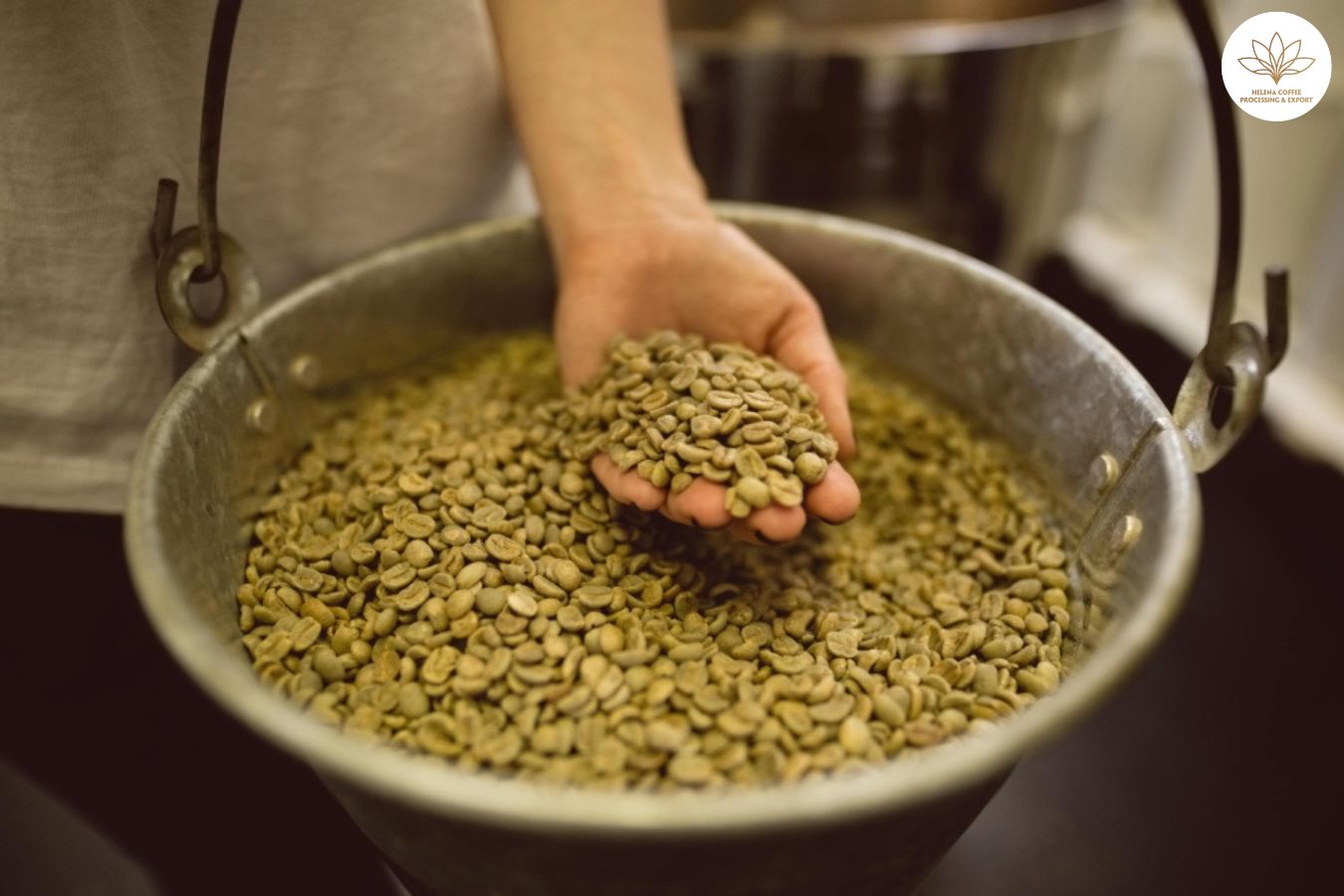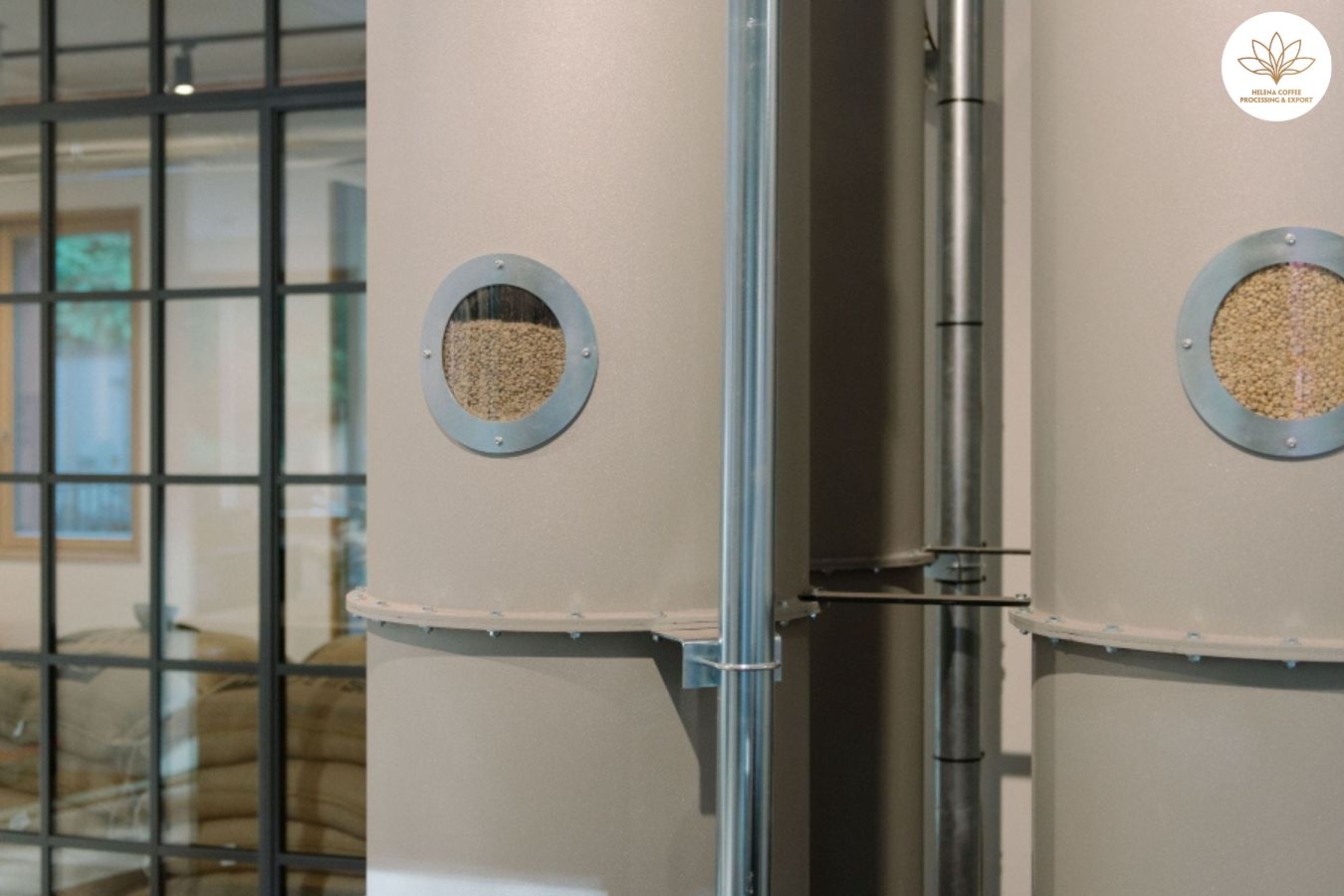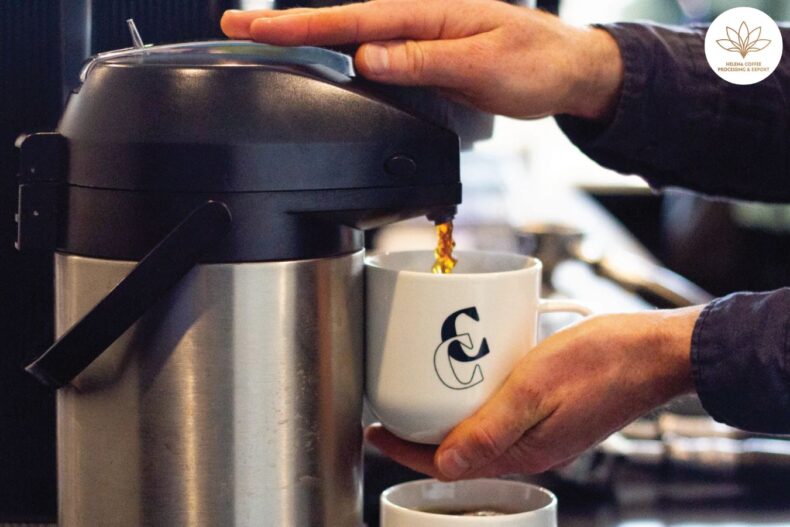
For any specialty coffee roaster, one of the key factors in operating your business successfully is a continuous supply of fresh green coffee. Naturally, without it, roasters cannot sell high-quality roasted coffee.
Sourcing and purchasing green coffee is certainly a big part of this but efficient inventory management is also paramount. Green coffee quickly loses its freshness, and therefore its quality, when stored and used incorrectly.
With so many medium to large roasters often having a year’s supply of green coffee, how can they manage inventory as effectively as possible?
To find out, I spoke to Giorgio Mosca, export manager at IMF Roasters. Read on to find out your opinion.
Why is it so important to preserve the freshness and quality of coffee?
Many coffee professionals rightly talk about coffee freshness in terms of roasted coffee. The roasting process (essentially the application of high temperatures to green coffee) causes a large number of chemical reactions. These reactions create irreversible changes within the cellular structure of the coffee beans, which helps develop flavors and aromas.
Roasting also allows you to grind and brew coffee as the beans become more brittle; However, roasting makes coffee a much less stable product. While green coffee can stay fresh for six months to a year after harvest, roasted coffee only stays fresh for a few weeks.
Once roasted, coffee is more susceptible to a number of environmental factors, such as heat, light, humidity and oxygen. Basically, when exposed to these variables for a significant period of time, it loses its distinctive flavors and aromas faster and will eventually taste stale and bland.

The freshness of green coffee
Despite having a longer shelf life, it must be remembered that green coffee can also lose its freshness. Prolonged exposure to oxygen, water, and extreme temperatures has adverse effects on the quality and freshness of green coffee.
“During roasting, the moisture content of green coffee beans influences chemical reactions and therefore flavor formation,” says Giorgio.
According to the International Coffee Organization, the ideal moisture content for green coffee is between 8 and 12.5%. If the moisture content was outside this range, roasters would not be able to get the best out of it.
Additionally, the freshness of green coffee may depend on other factors. For example:
- The country of origin
- Harvest date
- Variety
- The processing method
- grain density
Accordingly, roasters should ensure they store their green coffee in dry and cool conditions to best preserve freshness and quality.
Avoid and mitigate pollution
For roasters, not only is preserving the freshness of green coffee essential, it is also important to maintain its integrity.
“It is essential to prevent green coffee from being contaminated in the same way as any food product,” says Giorgio. “It is necessary to store green coffee away from excessive humidity and extreme temperatures to avoid the formation of fungus or mold, as well as to not attract insects or pests.”
According to European Union regulations, the roasting process is considered a kill-step. This term is used in the food safety industry to describe the point at which pathogens and dangerous microorganisms are eliminated from the product; However, it is possible for green coffee to become contaminated in other ways, which can have a negative impact on quality. Furthermore, it could have harmful effects for consumers.
Food safety regulations vary from country to country, so it is important for roasters to check which ones apply to them. The water activity in green coffee should remain between 0.5 and 0.7% aw (a measure of the vapor pressure between the food product and the vapor pressure of distilled water) in accordance with food safety protocols.
It should be noted that many food safety laws and requirements are the responsibility of green coffee importers and exporters. Despite this, roasters have a duty to ensure that their green coffee is free of contaminants, before it reaches their roastery, through a set of quality controls. Likewise, roasters are responsible for food safety while the green coffee is in storage and beyond.
What equipment do roasters need to preserve the freshness and quality of green coffee?
First, upon arrival at the roastery, specialty coffee roasters must ensure that their green coffee is fresh and of a certain quality. Also, it is important to check for primary and secondary defects, which may include:
- Split grains
- Black grains
- Signs of pests
- Presence of mold
- Physical contaminants, such as stones or branches
“For roasters it is crucial that green coffee meets the desired quality standards, especially to maintain consistency throughout the roasting process and in the final product,” explains Giorgio.
Secondly, roasters must ensure that they store their green coffee in optimal environmental conditions.

For example, to maintain the humidity level of green coffee between 8 and 12.5%, a roastery’s storage space must have a humidity level between 60 and 65%, with a temperature range of 15 to 25 °C (59 to 77 °F). To do this, roasters can invest in a well-designed ventilation system.
In terms of storage equipment, green coffee silos are a popular solution for many roasters. These storage containers are specially designed and can be found in different shapes and sizes. Some silos are polygonal in shape, while others are circular.
“IMF silos help preserve freshness and quality by preventing green coffee from coming into contact with moisture and oxygen,” says Giorgio. “In this way, roasters can protect green coffee from excessive moisture to maintain its inherent organoleptic qualities.”
Also, he adds that along with storage solutions, IMF provides equipment for roasters that accurately measures a number of environmental factors, such as humidity and light exposure.
How do specialty roasters manage their inventory?
In addition to investing in the right equipment, roasters should use proper green coffee inventory management techniques.
Most roasters use a “first in, first out” (FIFO) system to store and roast green coffee. This involves roasting the coffee according to the date it arrives at the roastery, while ensuring that all orders are well organized and fulfilled.
For example, if a roaster receives a new batch of Colombian coffee from an exporter or importer, they must first roast the Colombian beans prior to this new batch. Consequently, roasters minimize waste and ensure that the previous batch of coffee does not become rancid and taste bland.
Storing green coffee in silos can help with the FIFO method because they are usually designed to dispense the coffee beans that will be transported to the roaster.
Before roasting, green coffee must be cleaned and sorted. These processes help remove defective beans and contaminants.
“IMF sorting and cleaning machines remove contaminants based on size or weight, such as branches, stones, dust, and green coffee packaging materials,” explains Giorgio. “Also, we provide optical sorting machines that use infrared refraction and multispectral cameras to recognize any foreign object not visible to the naked eye based on color and shape.”
Ultimately, cleaning and grading systems ensure that green coffee, and therefore roasted coffee, is systematically free of contaminants and impurities.
What are the benefits of managing green coffee supplies effectively?
First, it’s important to note that roasters are required to follow food safety regulations. They should always ensure that their coffee is free of contaminants and debris.
Additionally, many specialty roasters pay high prices for green coffee. Consequently, they need to maintain and preserve the quality of their products as much as possible. That way, the end consumer will experience the full range of coffee flavors and aromas, which builds trust and loyalty with the brand.
A big part of this lies in consistency. Suppose a customer orders a bag of Kenyan coffee and then orders the same coffee again three months later. Naturally, the customer expects the coffee to taste similar. Therefore, proper storage and inventory management are essential to achieve this.
Additionally, if a roaster does not store green coffee correctly, it can ruin the hard work of growers and exporters who have helped maintain coffee quality throughout the supply chain. Similarly, the coffee will reduce its peculiar characteristics and may even lose a few points on the Specialty Coffee Association’s 100-point quality scale.
Lastly, proper green coffee inventory management helps roasters minimize waste. In this way, you also improve the efficiency of your business.
“IMF offers customized solutions that help roasters effectively manage their green coffee,” says Giorgio. “We design storage and dosing systems that optimize both space and workflow.”
“Our automated systems also help minimize labor. In turn, the centralized filtration system guarantees a cleaner and safer workplace,” he adds.
For any roaster to be successful, proper green coffee inventory management systems are crucial. Without these methods, green coffee can quickly become old, stale, or even contaminated.
To ensure they always sell high-quality coffee, roasters must invest in the right storage equipment and implement a set of reliable and consistent stock management techniques.
FAQS:
- What is Cortado Coffee?
- Coffee Prices Today November 10, 2022: What is The Reason for The Decrease?
- Coffee Roastery: A Comprehensive Guide to Mastering the Art of Coffee Roasting for Aspiring Roasters
